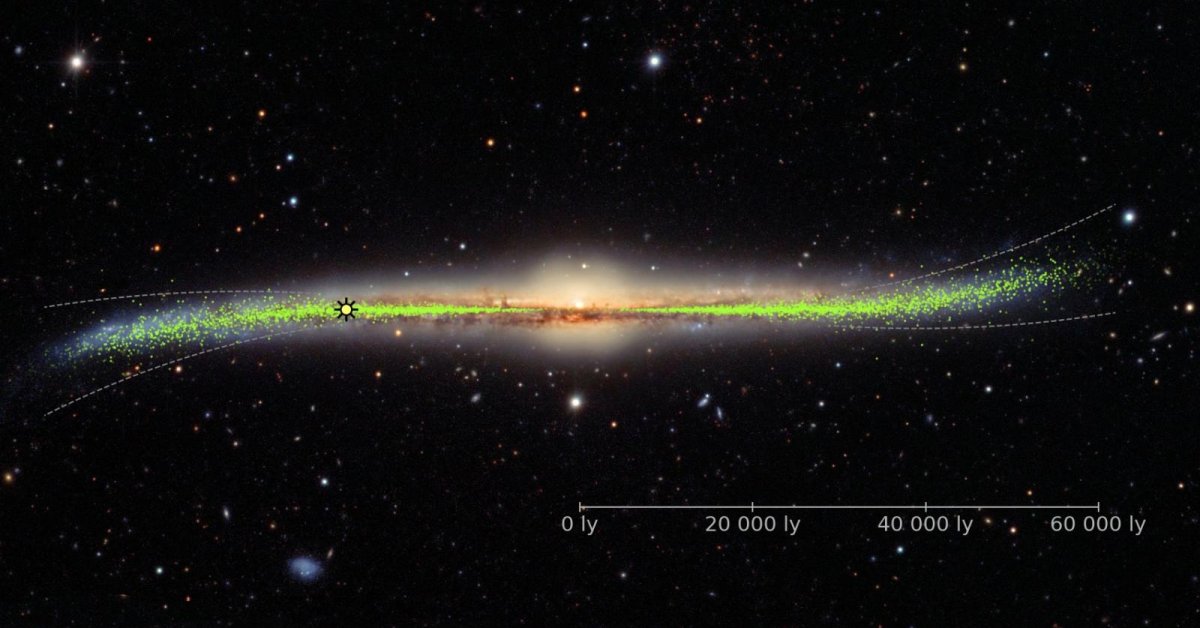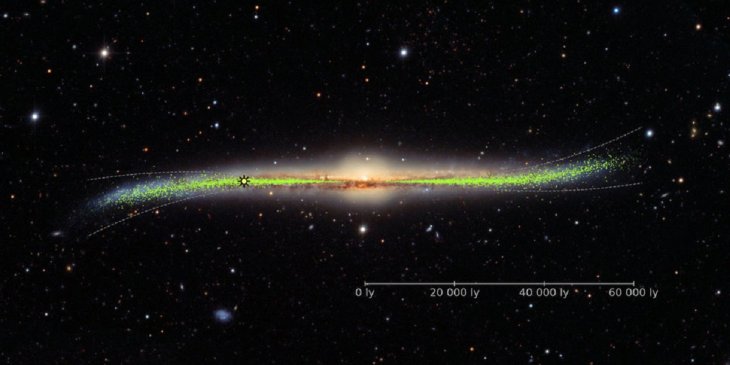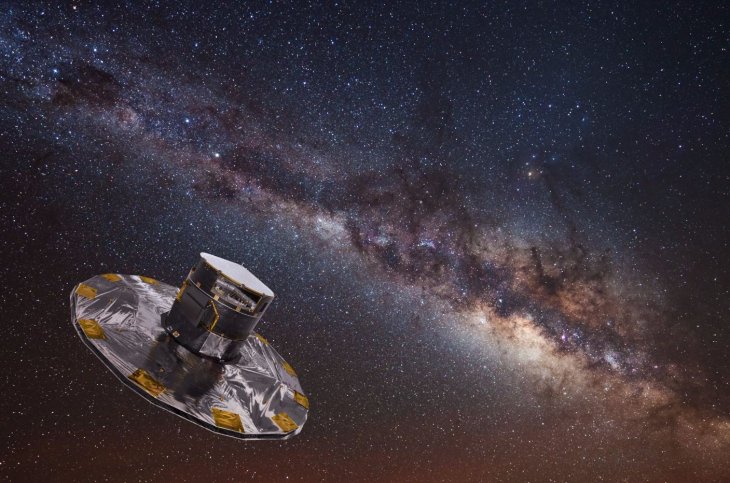The Milky Way Galaxy Is Distorting And We Don't Know Why
Dhir Acharya - Aug 10, 2020

Something is pulling at the edge of the Milky Way, causing a “galactic warp” at the edge of our galaxy, as pointed out in a new study on Monday.
- The First Space Hotel In The World Will Welcome 400 Guests
- Startup Builds Vehicle With Soviets Tech To Collect Space Garbage
- World's First Space Hotel To Begin Construction In 2025 With Rooms For 400 Guests
Something is pulling at the edge of the Milky Way, causing a “galactic warp” at the edge of our galaxy, as pointed out in a new study on Monday.
There are about 250 billion stars in the Milky Way clustering in spiral arms and swirling around a black hole at the center. However, astronomers have spotted another dynamic that occurs in the far reaches of the galaxy, where the galactic disk becomes flared, wobbly, or otherwise distorted.

A team of astronomers and astrophysicists, with the aim of figuring out what’s causing the outer warping of the Milky Way, measured the motions of 12 million stars observed through the Gaia space telescope. The team’s lead, astrophysicist Eloisa Poggio from the Italian National Institute for Astrophysics, said:
“Our Milky Way presents a unique case study for galactic warps, thanks to detailed knowledge of its stellar distribution and kinematics. However, the cause and dynamic nature of the warp of our Galaxy have remained unclear due to a lack of kinematic constraints.”
That means it wasn’t until a few years ago that scientists began to model the outer warping of the Milky Way in detail, thanks to advanced observational techniques. For example, last year, a team made a 3D map of the warp by measuring 2,300 Cepheids variables, a type of ultra-radiant stars.

Now, Poggio and the team have built on these models with the help of the 2018 data amount from the Gaia satellite, which has been creating the most comprehensive catalog ever of the observable universe.
With this volume of observation, the team was able to measure the stars’ motions to trace the kinematic signature of the Milky Way’s warp. Poggio said:
“We measured the speed of the warp by comparing the data with our models.”
“Based on the obtained velocity, the warp would complete one rotation around the centre of the Milky Way in 600 to 700 million years. That’s much faster than what we expected based on predictions from other models.”
The team is using Gaia’s data from 2018 to constrain the possible mechanism behind the galaxy’s warp. Some suggested explanations include the longstanding torques that emerged from mismatched axial motions of the galactic and the disk halo, or the tidal forces from the Milky Way’s satellite galaxies, which could pull the disk. From their model, Poggio and her colleagues found that the pull from a satellite galaxy could mostly be responsible for the warp though they need more research and observations to confirm this.
“The direction and magnitude of the warp’s precession rate favor the scenario that the warp is the result of a recent or ongoing encounter with a satellite galaxy, rather than the relic of the ancient assembly history of the galaxy.”
>>> Everything You Need To Know About Crew Dragon, NASA's And SpaceX's Historic Manned Mission
Featured Stories

Features - Jul 01, 2025
What Are The Fastest Passenger Vehicles Ever Created?

Features - Jun 25, 2025
Japan Hydrogen Breakthrough: Scientists Crack the Clean Energy Code with...

ICT News - Jun 25, 2025
AI Intimidation Tactics: CEOs Turn Flawed Technology Into Employee Fear Machine

Review - Jun 25, 2025
Windows 11 Problems: Is Microsoft's "Best" OS Actually Getting Worse?

Features - Jun 22, 2025
Telegram Founder Pavel Durov Plans to Split $14 Billion Fortune Among 106 Children

ICT News - Jun 22, 2025
Neuralink Telepathy Chip Enables Quadriplegic Rob Greiner to Control Games with...

Features - Jun 21, 2025
This Over $100 Bottle Has Nothing But Fresh Air Inside

Features - Jun 18, 2025
Best Mobile VPN Apps for Gaming 2025: Complete Guide

Features - Jun 18, 2025
A Math Formula Tells Us How Long Everything Will Live

Features - Jun 16, 2025
Comments
Sort by Newest | Popular